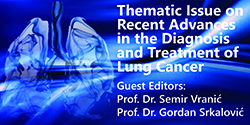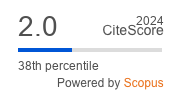Somatic diseases and mental disorders: should they be differentiated?
Keywords:
Somatic disease, Mental disorder, DifferencesAbstract
The authors of DSM-III and DSM-IV, as well as some other renowned scholars (e.g., M. Roth, R.E. Kendell) argue that the terms somatic (physical) and mental disorder should be abandoned because “there is much that is physical in the socalled mental disorders, and much mental in the so-called physical disorders”. The author of this paper challenges such a view. He points that differences between somatic diseases and mental disorders largely outweigh their similarities. That is why, no matter how much they implicate an outdated mindbody duality, the terms somatic disease and mental disorder should be preserved.References
Polonyi M. Personal knowledge. Towards a post critical philosophy. London: Routledge; 1998.
Roth M, Kroll M. The reality of mental illness. Cambridge: Cambridge University Press; 1986.
Kendell RE. The concept of disease and its implications for psychiatry. Brit J Psychiat. 1975;127:305-15.
Kendell RE. The nature of psychiatric disorders. In: Kendell RE, Zealley AK, editors. Companion to psychiatric studies. Churchill Livingstone: Edinburgh; 1993. p.1-7.
Kendell RE. The distinction between mental and physical illness. Brit J Psychiatry. 2001;178:490-3.
American Psychiatric Association. Diagnostic and statistical manual of mental disorders. 4th edition. Washington, DC: APA; 1994. p. XXI.
Szasz T. The second sin. London: Routledge; 1973. p. 97.
Szasz T. The myth of mental illness. New York: Harper and Row; 1961.
Eysenck HJ. Editor. Handbook of abnormal psychology. London: Pitman; 1960. p. 33-4.
Laing RD. The divided self. Harmondsworth: Penguin Book; 1966.
Laing RH. The politics of experience and the bird of paradise. Harmondsworth: Penguin Book; 1967.
Scheff TJ. Editor. Mental illness and social processes. New York: Harper and Row; 1967.
Scheff TJ. Being mentally ill. A sociological theory. Chicago: Aldine; 1971.
Glenmullen J. Prozac backlash. New York: Simon and Schuster; 2000. p. 192-3, 196.
Gorman JM. The essential guide to psychiatric drugs. 3rd edition. New York: St. Martin’s Press; 1997. p. 314.
Valenstein ES. Blaming the brain: the truth about drugs and mental health. New York: Free Press; 1998. p. 125
Drummond E. The complete guide to psychiatric
drugs. New York: Wiley; 2000. p.15-6.
McHugh PR, Slavney PR. Methods of reasoning in psychopathology: conflict and resolution. Compr Psychiat. 1982;23(3):197-215.
Gabbard G, Kay J. The fate of integrated treatment: whatever happened to the biopsychosocial psychiatrist. Am J Psychiatry. 2001;158(12):1956-63.
McHugh PR, Slavney PR. The perspectives of psychiatry. Baltimore: John Hopkins University Press; 1983. p. 12-3.
Luhrman YM. Of two minds. New York: Vintage Books; 2000. p.10.
Bodkin JA, Klitzman R, Pope HG. Treatment orientation and associated characteristics of North American academic psychiatrists. J Nerv Ment Dis. 1995;183(12):729-35.
Ghaemi SN. The concepts of psychiatry. A pluralistic approach to the mind and mental illness. Baltimore: John Hopkins University Press; 2003. p. 301.
Engel G. The need for a new medical model: a challenge for biomedicine. Science. 1977;196(4286): 129-36.
Engel G. The clinical application of the biopsychosocial model. Am J Psychiatry. 1980;137(5):535-44.
Weiner H. The illusion of simplicity: the medical model revisited. Am J Psychiatry. 1978;135(Suppl 1):S27-S33.
Havens LL. Approaches to the mind: movements of the psychiatric schools from sects toward science. Boston: Little Brown; 1973. p. 73.
Eisenberg L. Disease and illness. Distinctions between professional and popular ideas of sickness. Cult Med Psychiatry. 1977; 1(1):9-23.
Jaspers K. General psychopathology. Baltimore: John Hopkins University Press; (1913) 1997. p. 302-3.
Barondess JA. Disease and illness – a crucial distinction. Am J Med. 1979;66(3):375-6.
Buckley PJ, Michels R, Mackinnon RA. Changes in the psychiatric landscape. Am J Psychiatry. 2006;163(5):757-60.
Allison-Bolger VY. The original sin of madness – or how psychiatrists can stigmatize their patients. Int J Clin Pract. 1999;53(8):627-30.
Guimon J. The biases of psychiatric diagnosis. Brit J Psychiat. 1989; suppl 4:33-37.
Andreasen N C. The validation of psychiatric diagnosis: new models and approaches. Am J Psychiat. 1995; 152: 161-2.
Kendell R, Jablensky A. Distignuishing between the validity and utility of psychiatric diagnoses. 2003; 160:4-12.
Sartorius N. Good news or bad? The process of revision of the classification of mental disorders have started. Psychiat Danub. 2006;18:2-3.
Felker B, Yazel JJ, Short D. Mortality and medical comorbidity among psychiatric patients: a review. Psychiatr Serv. 1996;47(12):1356-63.
Kecmanović D. Društveni korijeni psihijatrije. Beograd: Nolit. 1978. p. 45-62.
Haghighat R. A unitary theory of stigmatisation. Brit J Psychiatry. 2001;178:207-15.
Link BG, Phelan JC. Conceptualizing stigma. Annu Rev Sociol. 2001; 27:363-85.
Angermeyer MC, Dietrich S. Public beliefs about and attitudes towards people with mental illness: a review of population studies. Acta Psychiatr Scand. 2006;113(6):163-77.
Sontag S. Ilness and metaphor. AIDS and its metaphors. Harmondsworth: Penguin; 1991. p. 124.
Spitzer RL, Williams JBW. The definition and diagnosis of mental disorder. In: Gowe WR, editor. Deviance and mental illness. London: B. Hills; 1982. p. 15-31.
Frances AJ, First MB, Widiger TA, Miele GM, Tilly SM, Davis WW, et al. An A to Z guide to DSM-IV conundrums. J Abnorm Psychol. 1991;100(13):407-12






